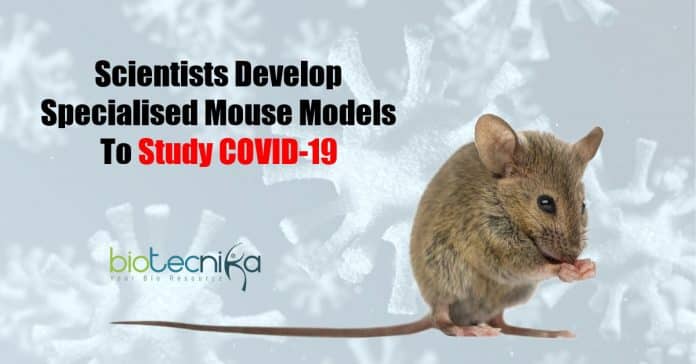Specialized mouse models to study COVID-19
Animal models are required to understand the pathogenesis of any type of virus and also its effects on various body organs in the body, and for developing effective therapies as well as vaccines. Mouse models are the transcendent system for preclinical research studies. They give understandings into disease etiology as well as function as a system for developing vaccines and medicine.
Research studies have revealed that the SARS-CoV2, enters the body by binding to the ACE2 enzyme (human angiotensin-converting enzyme 2). But, as a result of structural differences between the ACE 2 enzymes in the mouse and humans, frequently utilized wild-type mouse strains are not suitable for researching coronavirus infections.
The MGEF (Mouse Genome Engineering Facility), BLiSC (Bangalore Life Science Cluster) has developed 3 different sets of ACE2 mouse models to overcome the issue, leveraging its experience and infrastructure developed with assistance from the DBT funded NaMoR (National Mouse Research Resource) grant.

The first model is called Tg (K18-hACE2)/ Blisc computer mouse. It is a humanized model
expressing the human ACE2 gene in the respiratory tracts and other organs.The second model is a humanized hACE2 computer mouse model. It is a Targeted Knock-IN hACE2-KI model in which the mouseACE2 gene is replaced by the human ACE2 gene. This model is anticipated to more consistently recapitulate the complete endogenous Spatio-temporal expression levels of ACE2.
In the third set, two different mAce2 ‘Knock-OUT’ mice have been created. The first exon of mAce2 has been deleted in the first, Ace2-KO1/Blisc, and in the 2nd, Ace2-KO2/ Blisc,
there is a deletion of the whole 47Kb mouse locus. These mice would certainly result in the total loss and/or significantly reduced Ace2 activity and function and would be resistant to COVID-19 infection – they will certainly be useful to understand the typical feature of Ace2.

Entirely these mouse models will certainly enable scientists to research ways to obstruct infection, comprehend how inflammation develops after infection, and the short and lasting effects of the virus on various organs of the body. Importantly, the production of these mice within India avoids delays in importing the animals from abroad. Therefore, lots of Indian scientists can promptly check their ideas on how to battle COVID-19 as well as make crucial contributions to stop this pandemic.
The project was carried out by DBT- Institute for Stem Cell Science & Regenerative.
Medicine (DBT-inStem), in cooperation with the National Centre for Biological Sciences,
NCBS Animal Care and Resource Centre, and Mouse Genome Engineering Facility.
Specialized mouse models to study COVID-19
































